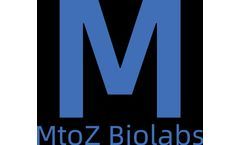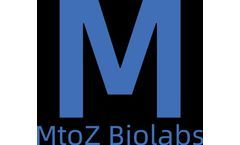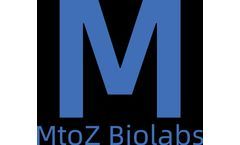Refine by
Next Generation Sequencing Articles & Analysis: Older
72 articles found
In the quest to unravel the complexities of infectious diseases, understanding the intricate interplay between pathogens and their hosts is paramount. This requires a comprehensive analysis of gene expression and the regulatory mechanisms at play during infection. Traditional RNA sequencing (RNA-seq) has long been employed to investigate the gene expression profiles of microbial pathogens. ...
The advent of next-generation sequencing (NGS) has revolutionized the field of microbiome research, particularly through the analysis of 16S rRNA gene sequencing. ...
Next-Generation Sequencing (NGS) has revolutionized genomics, providing unprecedented insights into the structure and function of genomes, transcriptomes, and epigenomes. ...
These tools, with their capacity for targeted genome editing, serve as invaluable conduits for generating customized zebrafish models that elucidate complex gene functions and interactions. ...
Submission of sequence data to NCBI archives Next-generation sequencing, PacBio SMRT sequencing, and Nanopore sequencing, can generate numerous sequence data in a single run. ...
Unleashing the Power of NGS The evolution of sequencing technologies from first-generation methods to the sophisticated realm of next-generation sequencing technologies, also commonly known as NGS or high-throughput sequencing, has effectively mitigated the low-throughput challenges that plagued ...
The mRNA molecule being translated will create polysomes with numerous ribosomes, which will normally suspend in a high-density sucrose solution layer where the ongoing translating mRNAs can be segregated. The next step is very similar to RNA-Seq. RNC sequencing is a method for profiling the Ribosome Nascent-chain Complex using ...
The backbone of clonality analysis is DNA and RNA sequencing, the most precise methods of determining the genetic makeup of cells. Through techniques such as next-generation sequencing (NGS), researchers can analyze huge volumes of genetic data, enabling the detection of even slight genetic variations among clones. ...
Researchers have long been striving to identify antibodies that can combat pathogenic microorganisms. However, traditional methods of antibody discovery require substantial time and effort and often fail to identify the most effective antibodies. In recent years, the advancement of single-cell sequencing technologies has offered a new possibility for the screening of antibodies.What is ...
In-depth research on protein interaction plays a crucial role in life science research. Proteins are the main bearers of life activities, and their interactions form a complex molecular network within biological cells. Protein-Protein Interaction Sequencing (PPI-Seq) is an emerging technology. Based on high-throughput sequencing, it allows researchers to explore protein interactions at the whole ...
The ESMO Precision Medicine Working Group (PMWG) first published its recommendations for when to use next-generation sequencing (NGS) in routine practice for patients with metastatic cancers in 20201. ...
Next-Generation Sequencing (NGS) Technology for ProteomicsHigh-throughput protein sequencing technology can comprehensively analyze proteomics, helping to discover biological markers and disease monitoring. ...
Against this backdrop, Next-Generation Sequencing (NGS) was born. NGS sequencing technology has greatly reduced sequencing costs and significantly increased sequencing speed while maintaining high accuracy, but the sequence read length is generally low. In ...
Dr. Kate Sasser from Tempus led a discussion on the potential of antibody-drug conjugates (ADCs), their challenges in targeting tumor antigens, and the future of cancer treatment with Dr. Daniel Johnson, Dr. Funda Meric-Bernstam, and Dr. Kellogg Parsons. The oncology field is rapidly advancing with the development of antibody-drug conjugates (ADCs), offering new hope for ...
ByTempus
The research of genomic variation between species and individual organisms has been revolutionized by next-generation sequencing (NGS) technologies. Variant detection and analysis refer to the sequencing and difference analysis of a genome from an individual or a population of a species using high-throughput ...
To improve the diagnostic efficiency and accuracy of rare diseases, a variety of cutting-edge technologies led by high throughput next-generation sequencing technology have been introduced into the diagnosis of rare diseases, which not only deeply explore the genetic pathogenesis, but also provide new ideas and directions for treatment and ...
Our company has a mature diagnostics development system that provides you with a high-level research team and the necessary resources to support the karyotype analysis for rare disease. 1.Canonical Karyotyping The cells from patients with rare diseases or animal models are retrieved to analyze the karyotype by canonical G-band method, or C-, Q-, R-, T-band methods. 2.Spectral Karyotyping To ...
These innovative approaches include genetic testing, next-generation sequencing, and biomarker analysis, which allows for more accurate and early detection of rare diseases by analyzing a patient's genetic makeup or identifying specific biomarkers in their blood or tissues. ...
Additionally, this method facilitates precise quantification of transcript expression levels, encompassing both messenger RNA (mRNA) and polyA+ long non-coding RNA (lncRNA). Nanopore Sequencing vs. Next-Generation Transcriptome Sequencing The key differences between Nanopore full-length transcriptome sequencing ...
The backbone of clonality analysis is DNA and RNA sequencing, the most precise methods of determining the genetic makeup of cells. Through techniques such as next-generation sequencing (NGS), researchers can analyze huge volumes of genetic data, enabling the detection of even slight genetic variations among clones. ...










